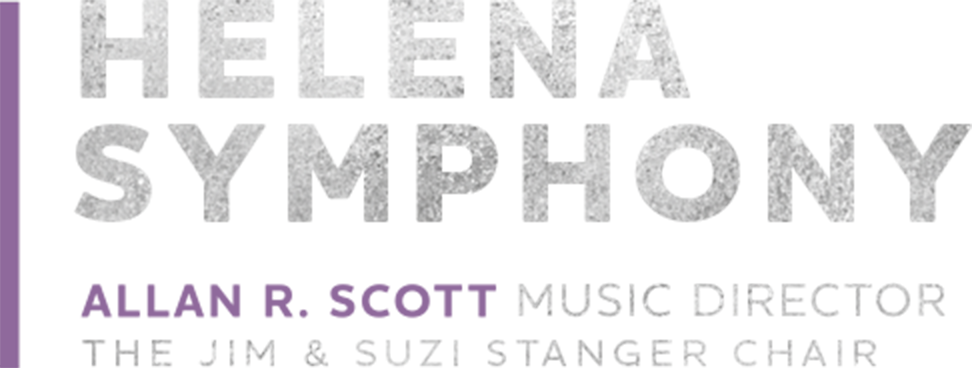The Helena Symphony continues SEASON 63 on Saturday, October 28 at 7:30 p.m. in the Helena Civic Center with two revolutionary composers: Shostakovich and Beethoven, including Pianist Christopher Hahn, 6 vocal soloists, 80 chorus singers, and 65 players of the HSO. The fragility of freedom is explored through Shostakovich’s pulsing and militaristic Tenth Symphony and Beethoven’s Choral Fantasy.
Described as “the conscience of the Soviet Union,” Dmitri Shostakovich has become one of the most discussed figures in music since the composer’s death, the collapse of the Soviet Union, and the turn of the 21st century. “Publicly Shostakovich was a member of the Communist Party and, unlike his Russian colleagues Prokofiev and Stravinsky who lived abroad, Shostakovich emerged because of, rather than in spite of, the Soviet regime,” explains Music Director Allan R. Scott. “As Shostakovich’s early musical efforts became internationally recognized, the Soviet Union was quick to, ironically, capitalize on Shostakovich’s success and adopted Shostakovich as the country’s musical spokesperson.”
Shostakovich’s music would provide propaganda for the Soviet government and the communist way of life to an international community. Shostakovich reacted, at least publicly, by accepting the political ideology of the Soviet government and composed several works that, at least superficially, embraced the communist regime. Looking back and seeing the dreadful alternatives, he had no choice. Composed in 1953, the same year Stalin died, Shostakovich’s Tenth Symphony explores tragedy, despair, terror, violence, and ultimately individual freedom. Prior to the late 1970s many believed the dark, brooding Symphony was a depiction of the Stalin years. Yet there is much more to the Tenth Symphony than a simple narrative. When asked if the Tenth Symphony had a specific program, Shostakovich replied, “No, let them listen and guess for themselves,” adding that he wanted “to portray human emotions and passions.” Shostakovich even introduces himself in the third movement using pitches from his first initial and first three letters of his last name: D-S-C-H-S (where S is derived from “Es” and “H,” which in German musical nomenclature translate to “E-flat” and “B-flat” respectively). “In the end,” suggests Maestro Scott, “despite all the hysteria and anxiety in the Tenth Symphony, there is the suggestion that even though there is no real relief, our spirit can survive.”
The concert continues with one of the most uplifting works Beethoven ever composed, his Choral Fantasy. Equally a piano concerto, symphony, and large work for chorus and vocal soloists, the work is the prequel to Beethoven’s popular Symphony No. 9, as the Choral Fantasy uses the same “Ode to Joy” theme that has come to be so associated with brotherhood, humankind, and world peace. The testament to and celebration of humankind culminates with the Choral Fantasy, which also stands out as one of Beethoven’s most pleasant and charming works. The work is free from the more familiar angst and raw energy associated with Beethoven’s music.
The lengthy piano solo, performed by Montana Pianist Christopher Hahn, links to the orchestra playing a set of variations based on a child-like theme that is so recognizably foreshadowing the popular “Ode to Joy” theme from his Ninth Symphony. The work culminates the “Joy” theme uniting the piano solo with the chorus, orchestra, and six vocal soloists, performed by an all-Montana cast, including: Sopranos Gina Lapka and Heather Barnes, Mezzo Soprano Angela Dailey, Tenors Jeff Kitto and David Cody, and Bass Doug Nagel. The singers proclaim a short, but meaningful, text praising the perhaps almost unachievable ideal of universal brotherhood – the same sentiment that Beethoven would strive to convey in his Ninth Symphony composed some sixteen years later: “when love and strength are united, God is with us.” The result is a delightful and innocent work that suggests a disarming simplicity coupled with consummate subtlety, free of strife and anxiety, leaving only a sense of hope.
Mini-subscriptions and single tickets to all concerts of the 2017-2018 Season can be purchased online at www.helenasymphony.org, by calling the Symphony Box Office (406.442.1860), or visiting the Symphony Box Office located on the Walking Mall at the Livestock Building (2 N. Last Chance Gulch, Suite 1) between 10 a.m. and 4 p.m. Mini-subscription packages are available in several price ranges, and single tickets are ($52-$12 plus a $5 transaction fee).

